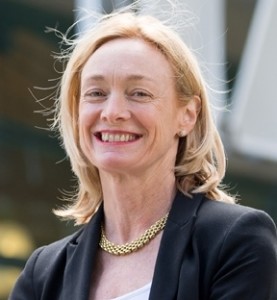
 Professor Debra Nestel is Professor of Simulation Education in Health Care at Monash University, Australia. For over 25 years she has used simulation as an educational method in the context of health care. Professor Nestel has a particular interest in human-based simulations and is experienced in research and development of several simulation modalities.
Professor Debra Nestel is Professor of Simulation Education in Health Care at Monash University, Australia. For over 25 years she has used simulation as an educational method in the context of health care. Professor Nestel has a particular interest in human-based simulations and is experienced in research and development of several simulation modalities.
What inspired your interest in simulation research?
I have been using simulation as an educational method in health professions education for over 25 years and researching simulation for most of that time too. At first, using simple programme evaluation methods that measured the impact of my work, mainly adopting outcomes-based evaluation models. This work progressed to seeking understanding of what, when and how simulation supports learning for health and social care students and professionals.
Although I now work in Australia, my interest in simulation education and research was inspired by the opportunity to work during the 1980’s and ‘90’s with Dr Carol Betson and Prof Richard Fielding at the University of Hong Kong on patient-centred communication.
I then moved to London and worked with Prof Roger Kneebone at Imperial College. With our colleagues we developed the practice of hybrid simulation in which simulated patients (well, people trained to portray patients) were closely aligned with bench top simulators (e.g. an arm for establishing a “drip”) so that learners were able to integrate the complex set of skills (e.g. communication, professionalism, psychomotor, patient safety etc.) required to safely perform a procedure on a real patient.
These two opportunities inspired my interest in seeking to understand the educational processes associated with using simulation to develop safe clinical practices.
More recently in Australia, the opportunity to work with colleagues in national programmes for simulation educators (AusSETT and NHETSim) has on the one hand helped to consolidate my practice but on the other, raised many more research questions!
Why is simulation research so important?
Although my own experience of simulation is mainly in an educational context, simulation is a very broad field. My answers must be read in this light.
Simulation modalities vary widely and technology driven simulators are advancing. It is always important to consider the impact of educational methods on learners.
Simulation modalities vary widely and technology driven simulators are advancing
Although simulations are patient safe, they are not necessarily learner safe. The very features of simulation that make it attractive as an educational method may sometimes be its limitations and we need to better understand how these work. A simple example is that in simulations, it is possible to manipulate elements of real clinical practice (e.g. adjusting time – slowing down, pausing, speeding up etc.). We do not know the impact of this manipulation on real clinical practice – at least not in a generalizable way.
How has the field advanced during your career?
Simulation has a very long history in healthcare, of many centuries! However, in the last forty years there has been a revival of interest in the health and social care professions.
Simulation has a very long history in healthcare, of many centuries! However, in the last forty years there has been a revival of interest in the health and social care professions.
An important advancement has been the role of professional associations in bringing specialists and others together. That is, providing opportunities for the sharing of ideas of clinicians, educationalists, psychologists, human factors experts, information technologists, biomedical engineers and many others.
These individuals often use different simulation modalities and have very different interests in clinical practice. Professional associations facilitate their interactions through conferences, journals, discussion boards etc. These interactions enable advancement of all simulation practices.
Another significant advancement in the field during my career is in clinical communication – this topic has expanded to include team-based communications and almost any communication encounter between health professionals in any clinical setting is now considered as a potential simulation scenario.
For my particular interest – patient-centred communication, key advances include a shift in simulation modalities – initially role-play and working with simulated patients, to the development of virtual patients – emotionally expressive and screen-based. Debriefing and feedback mechanisms are considered as at least as important as the simulation. Now it is common to use all these methods in developing and assessing patient-centred communication and have multiple layers of feedback.
What do you hope will be achieved in the field in the next ten years?
The seeds of the achievements for the next decade are likely to be planted now. I’ll offer five ideas:
- First, there is already sufficient simulation research to enable meaningful reviews. This is likely to lead to new theories (of the middle range rather than unified) that will shape further research and the work of simulation practitioners.
- Second, we will see simulation embedded in curricula for all health and social care professionals. Access to simulation will widen and a greater breadth of modalities will be adopted.
- Third, professional development for simulation practitioners will lead to greater simulation specialism with a parallel advance of all clinical teachers at minimum thinking about using simulation to design learning activities.
- Fourth, there will be really exciting developments in technology-based simulations, especially with augmented and virtual realities.
- Fifth, simulation will form part of patient (and where appropriate their carers) education as well as providing ways of giving the wider community access to health and social care practices such that they may help improve the very services designed for them.
- Finally, all of these achievements will contribute directly or indirectly to improving patient safety.
You can read more from research published in Advances in Simulation.
Comments